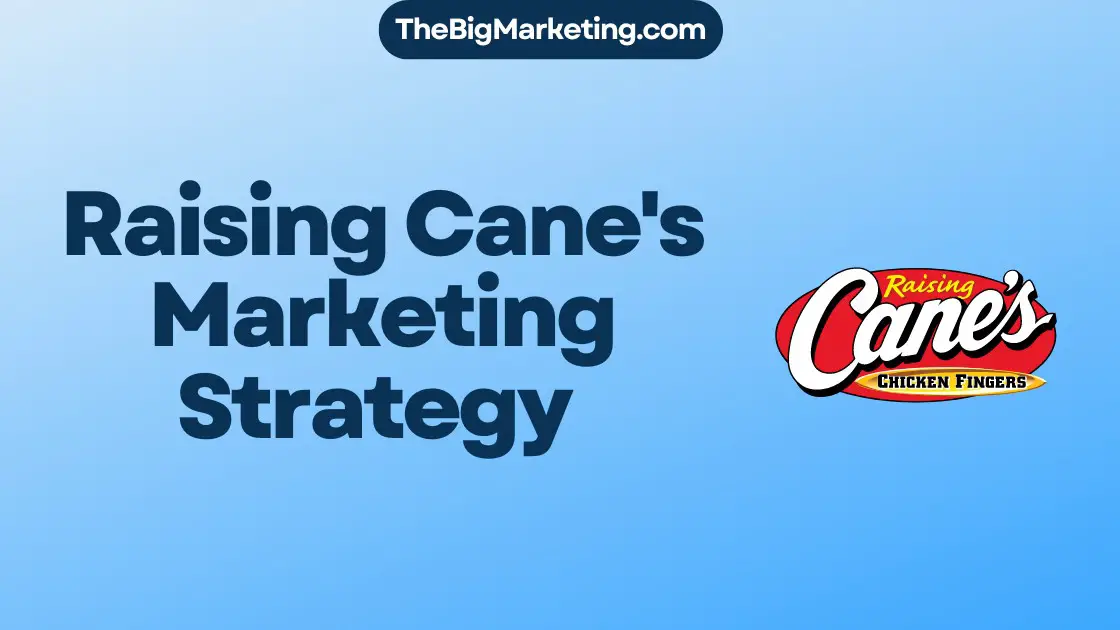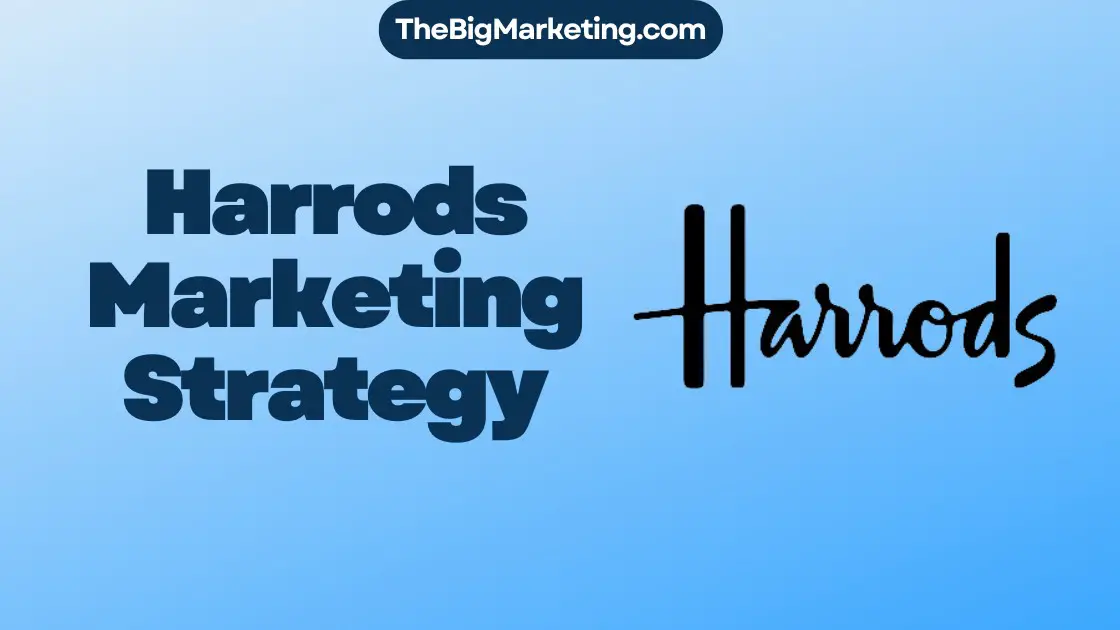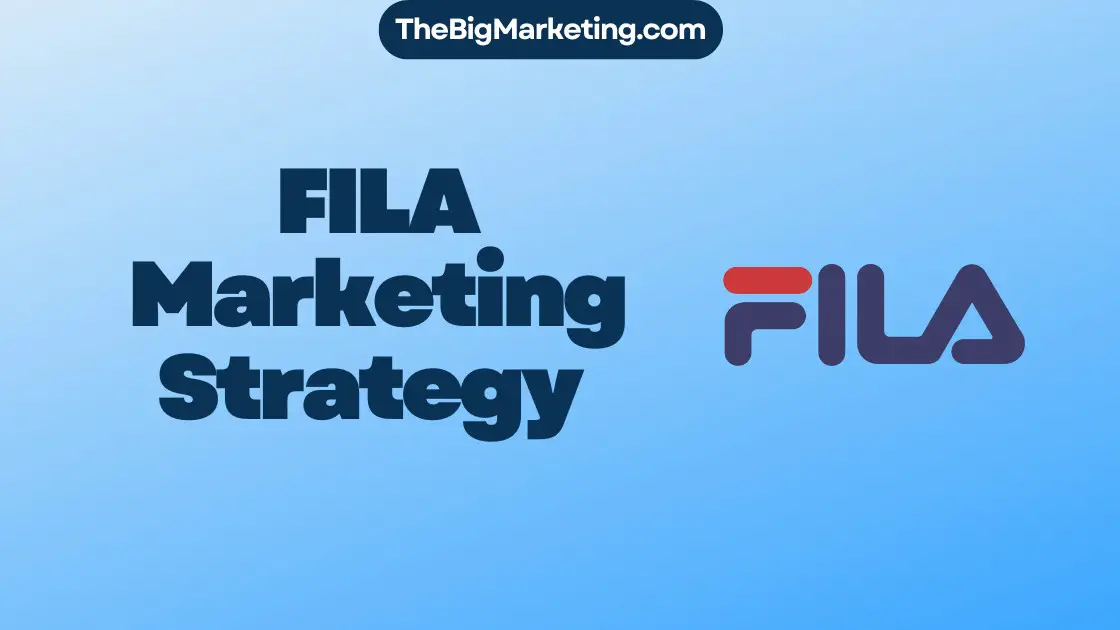Welcome to our in-depth analysis of Argos’ marketing strategy. In this article, we will delve into how this renowned UK catalog retailer has successfully leveraged digital marketing, branding, market research, and target audience analysis to achieve remarkable growth in a highly competitive market. By implementing social media marketing, online advertising, and competitive analysis, Argos has propelled itself to the forefront of the retail industry.
Argos, founded in 1972, has evolved from its humble beginnings as the Green Shield Gift House to become a retail giant with over 130 million customers annually. Over the years, the company has adapted to changing consumer behavior and transformed its business model to keep up with the demands of the market.
In this case study, we will explore Argos’ journey through history, analyze its marketing strategy, and delve into its approach to omnichannel retail. We will also take a closer look at the design and functionality of its eCommerce website, as well as its target markets, pricing strategies, and distribution channels.
Furthermore, we will examine Argos’ promotion strategies, including its use of online advertising, social media marketing, and content marketing. To provide a comprehensive view, we will discuss the impressive stats associated with Argos and provide the latest news and updates about the brand. Finally, we will extract valuable lessons from Argos’ marketing strategy that can be applied to other businesses.
Throughout this article, we will highlight the key elements of Argos’ successful marketing strategy, providing insights into its digital marketing tactics, branding efforts, market research initiatives, and more. Join us as we uncover the secrets behind Argos’ marketing success and explore the strategies that have propelled it to the top of the retail industry.
Key Takeaways:
- Argos’ marketing strategy combines digital marketing, branding, market research, and target audience analysis.
- The company utilizes social media marketing, online advertising, and competitive analysis as key components of its strategy.
- Argos has evolved from a catalog retailer to a retail giant with a customer base of over 130 million annually.
- The brand emphasizes an omnichannel approach, combining online and offline channels to reach its target audience.
- Argos’ eCommerce website features a user-friendly design and category pages that replicate the in-store experience.
A Journey through the History of the Renowned UK Catalog Retailer
Argos, a household name in the UK, has a rich history that dates back to its founding in 1972. Originally known as the Green Shield Gift House, the company offered customers the unique opportunity to spend Green Shield Stamps earned through various promotions. As the popularity of catalog shopping grew, so did the Green Shield Gift House’s success.
In 1973, the company underwent a significant rebranding effort, adopting the name Argos and opening its first brick-and-mortar store. This marked the beginning of a new era for the retailer as it expanded its operations to include retail locations and transformed into one of the largest players in the UK’s jewelry market.
Throughout the years, Argos has consistently adapted to changing consumer behavior and market trends. The company’s ability to evolve and innovate has been a key factor in its success. From the early days of catalog shopping to the present, Argos has remained committed to providing a seamless shopping experience for its customers.
Argos’ retail locations have become a cornerstone of its business model, serving as convenient destinations for customers to browse and purchase a wide range of products. These locations, coupled with its extensive online presence, constitute an effective omnichannel strategy that caters to the needs and preferences of modern shoppers.
Today, Argos is recognized as a leading retail brand in the UK, known for its diverse product offerings, exceptional customer service, and commitment to innovation. Its ability to thrive in a competitive market is a testament to its enduring legacy and relentless pursuit of excellence.
Argos Retail Locations
| Year | Number of Retail Locations |
|---|---|
| 1973 | 1 |
| 1980 | 100 |
| 1990 | 400 |
| 2000 | 800 |
| 2010 | 1,000 |
| 2022 | 1,200 |
Analyzing Argos’ Marketing Strategy
Argos’ marketing strategy has been instrumental in driving its consistent growth and success in the retail industry. By adopting an omnichannel approach, the company has effectively combined online and offline channels to reach and engage its customers. This comprehensive marketing strategy has enabled Argos to remain competitive in the rapidly evolving landscape of eCommerce.
Embracing an Omnichannel Approach
Argos understands the importance of catering to customer preferences and convenience. By offering multiple touchpoints, including physical stores, online platforms, and mobile applications, the company has created a seamless shopping experience for its customers. This omnichannel approach enhances customer engagement and allows Argos to build strong brand loyalty.
Expanding Product Offerings and Retail Locations
As part of its marketing strategy, Argos has continuously expanded its product offerings to meet the diverse needs and preferences of its customers. The company has strategically identified gaps in the market and introduced new product categories to stay ahead of the competition. In addition, Argos has opened retail locations in strategic locations, allowing customers to experience the brand firsthand and providing another channel for sales and customer interactions.
Through its omnichannel approach and expansion efforts, Argos has achieved remarkable retail growth. The company’s marketing strategy has not only attracted new customers but also fostered repeat purchases, driving increased revenue and market share.
| Benefits of Argos’ Marketing Strategy | Enhanced customer experience | Increased brand loyalty | Expanded product offerings |
|---|---|---|---|
| Improved customer engagement | Greater convenience and accessibility | Strengthened market position | Real-time customer feedback and insights |
| Higher sales and revenue | Seamless shopping experience | Diversification of customer base | |
| Stronger competitive advantage |
The success of Argos’ marketing strategy can be attributed to its ability to leverage technology, analyze customer data, and adapt to changing consumer behaviors. By continuously evolving and innovating, Argos has established itself as a leading retail brand in the UK and beyond.
Argos’ Approach to Omnichannel Retail
In order to enhance its omnichannel retail strategy, Argos has strategically incorporated in-store technology and developed a user-friendly website. By seamlessly integrating offline and online experiences, Argos aims to provide exceptional convenience for its customers.
In-Store Technology
Argos has equipped its stores with innovative in-store technology to streamline the shopping process. iPad stations are strategically placed throughout the store, allowing customers to browse and order products with ease. This eliminates the need to search for products physically and enhances the overall customer experience. In addition, Argos has implemented a reservation system, enabling customers to reserve products online and collect them in-store without any hassle or waiting time.
User-Friendly Website
Recognizing the importance of a user-friendly online platform, Argos has focused on creating an intuitive website design. The website features a clean and modern layout, making it easy for customers to navigate and find the products they are looking for. The search function is prominently displayed, allowing users to quickly search for specific items. Argos has also ensured that the website is optimized for mobile devices, catering to the growing number of mobile shoppers.
To further enhance the user experience, Argos provides detailed product descriptions, images, and customer reviews on its website. This allows customers to make informed purchasing decisions without the need to visit a physical store. The website also offers various payment options, including click and collect, home delivery, and flexible payment plans, providing customers with added convenience and flexibility.
Overall, Argos’ omnichannel approach, combined with its in-store technology and user-friendly website, positions the company as a leader in the retail industry. By seamlessly integrating online and offline channels, Argos ensures that its customers have a hassle-free and enjoyable shopping experience.
Analyzing Argos eCommerce Website
Argos’ eCommerce website has undergone several changes and improvements over the years. The company has prioritized an effective homepage design that caters to the needs of its customers. With prominently displayed categories, targeted banner ads, and a user-friendly search function, Argos ensures a seamless browsing experience for its online visitors.
Homepage Design
The homepage of Argos’ website is thoughtfully organized to provide easy access to its diverse range of products. The prominently displayed categories enable customers to quickly navigate to their desired section, whether it’s electronics, home furniture, or clothing. This strategic arrangement facilitates efficient browsing and reduces the time it takes for customers to find what they need.
Moreover, the targeted banner ads featured on the homepage highlight popular deals, discounts, and new arrivals, enticing customers to explore and make purchases. By regularly updating these banner ads, Argos keeps its homepage dynamic and engaging, creating a sense of urgency and interest among visitors.
Category Pages
Argos’ category pages emulate the experience of walking through a brick-and-mortar store. Each category page provides a comprehensive overview of the products available, accompanied by eye-catching visuals and concise descriptions. This approach allows customers to browse through items intuitively, similar to how they would explore different sections within a physical store.
The category pages also incorporate customer reviews and ratings, enabling potential buyers to make informed decisions based on the experiences and opinions of other shoppers. This user-generated content adds credibility and fosters trust, contributing to increased customer satisfaction and loyalty.
Comparison of Argos’ eCommerce Features
| Feature | Advantages | Benefits |
|---|---|---|
| Effective Homepage Design | Clearly displayed categories and targeted banner ads | Efficient navigation and increased customer engagement |
| User-Friendly Search Function | Easy product discovery and quick access to desired items | Enhanced user experience and reduced search time |
| Category Pages Resembling Physical Store Layouts | Intuitive browsing and exploration | Enhanced customer satisfaction and increased sales |
| Customer Reviews and Ratings | Added credibility and trust | Informed decision-making and improved customer loyalty |
Argos’ commitment to designing a visually appealing, user-friendly, and intuitive eCommerce website has significantly contributed to its success. The company’s focus on the homepage design and category pages ensures that customers can easily find and purchase the products they desire. By incorporating user-generated content, Argos cultivates transparency and trust among its customer base.
Argos Target Markets and Pricing Strategies
Argos, a renowned UK retailer, strategically targets households as its primary market. By understanding the needs and preferences of this demographic, Argos is able to tailor its products and services to meet their specific requirements. Moreover, Argos employs competitive pricing strategies to attract price-conscious customers, ensuring that its offerings remain affordable and accessible.
Understanding the Target Market
To effectively target households, Argos conducts extensive market research to identify consumer trends and demands. This insight allows the company to curate a diverse range of products that cater to various household needs, including home appliances, electronics, furniture, and more. By understanding the target market, Argos can develop marketing campaigns that resonate with its audience, leading to increased brand loyalty and customer engagement.
Competitive Pricing Strategies
Argos recognizes the importance of competitive pricing in the retail industry. The company strives to offer competitive prices on its products, ensuring that customers receive excellent value for their purchases. This approach allows Argos to attract cost-conscious shoppers who seek affordability without compromising on quality. By leveraging its extensive network and economies of scale, Argos can negotiate favorable pricing with suppliers, enabling the company to pass on these savings to its customers.
Customer Satisfaction Surveys
To ensure that it effectively targets the correct customers with the right products, Argos conducts regular customer satisfaction surveys. By seeking feedback from its customers, Argos can gain valuable insights into their preferences, opinions, and shopping experiences. This information enables the company to refine its offerings and make informed decisions about product assortment and marketing strategies.
Argos’ commitment to understanding its target markets and implementing competitive pricing strategies has contributed to its success as a leading UK retailer. Continuously adapting to the needs of households and prioritizing customer satisfaction, Argos remains a trusted and preferred choice among consumers.
Argos Distribution Channels
As a prominent UK retailer, Argos relies on multiple distribution channels to reach its customers effectively. These channels include standalone locations, the official Argos website, and strategically located warehouses. The company has continuously adapted its distribution strategy to stay competitive in the ever-evolving retail landscape. Here is an overview of the various distribution channels utilized by Argos:
Standalone Locations
Historically, Argos operated several standalone retail locations across the UK. However, following its acquisition by Sainsbury, the company made strategic decisions to optimize its distribution network. Many standalone Argos stores were replaced with dedicated outlets inside existing Sainsbury stores. This integration allowed Argos to leverage the existing foot traffic and customer base of Sainsbury, expanding its reach.
By utilizing standalone locations, Argos offers customers the convenience of browsing and purchasing products in-store. These locations feature a wide range of items, including electronics, home appliances, furniture, and more. Customers can visit these physical outlets to see and experience products firsthand before making a purchase.
The Official Argos Website
The Argos website serves as a crucial distribution channel for the company. It provides customers with a virtual storefront where they can browse and purchase products from the comfort of their own homes. The website features a user-friendly interface, efficient search capabilities, and detailed product descriptions.
Customers can conveniently explore a vast range of product categories on the Argos website, including electronics, toys, home and garden essentials, and fashion. They can place orders online and choose between home delivery or in-store pickup options, further enhancing convenience and flexibility.
Warehouses for Online Order Fulfillment
To ensure efficient order processing for online customers, Argos operates multiple warehouses strategically located throughout the UK. These warehouses serve as distribution hubs for fulfilling online orders and ensuring timely delivery to customers’ doorsteps.
The warehouses are equipped with advanced inventory management systems and logistics infrastructure. This allows Argos to manage its vast product inventory efficiently and fulfill orders quickly, maintaining high levels of customer satisfaction.
Argos’ distribution centers play a vital role in supporting its omnichannel retail strategy and fulfilling online orders effectively. Through a combination of standalone locations, the official website, and well-positioned warehouses, Argos delivers a seamless shopping experience to its customers, blending physical and online retail seamlessly.
Argos Promotion Strategies
Argos, a renowned UK catalog retailer, has developed effective promotion strategies to reach its target audience and drive sales. Over the years, the company has adapted its methods and embraced digital advertising, online advertising, social media marketing, videos, and content marketing. Let’s analyze these promotion strategies in more detail.
Online Advertising
Argos recognized the power of online advertising early on and has integrated it into its marketing strategy successfully. Through targeted ads on search engines, display ads on relevant websites, and retargeting campaigns, Argos can reach potential customers and drive traffic to its website. Online advertising allows the company to showcase its wide range of products and offers in a visually engaging and dynamic manner, maximizing its visibility and converting leads into sales.
Social Media Marketing
Argos leverages the potential of social media platforms to connect and engage with its target audience. By creating compelling content across platforms such as Facebook, Twitter, and Instagram, Argos increases brand awareness, fosters customer loyalty, and drives traffic to its website. The company utilizes a mix of organic posts and paid advertising to reach a wider audience and strengthen its online presence.
Videos and Content Marketing
Recognizing the power of visual and interactive content, Argos incorporates videos and content marketing into its promotion strategies. The company creates informative and engaging videos that showcase its products and highlight their features and benefits. Additionally, Argos develops valuable content such as blog posts, buying guides, and customer reviews to educate and inform its audience. These strategies not only drive traffic but also position Argos as an industry expert and build trust with customers.
With a multi-faceted approach that combines online advertising, social media marketing, videos, and content marketing, Argos effectively promotes its products and engages with its target audience. These strategies have contributed to the company’s continued success and solidified its position as a leading retailer in the UK.
| Promotion Strategy | Benefits |
|---|---|
| Online Advertising |
|
| Social Media Marketing |
|
| Videos and Content Marketing |
|
Argos’ Impressive Stats
Argos, a prominent online retailer in the UK, has achieved remarkable success and continues to dominate the eCommerce industry. With its expansive customer base and consistently growing market share, Argos boasts impressive statistics that solidify its position as a leader in the retail market.
Argos statistics indicate that the company holds the distinguished title of being the fourth most popular online retailer in the UK. This ranking showcases the trust and confidence consumers have in the brand, as well as the effective strategies implemented by Argos to cater to their needs.
Furthermore, Argos has generated a staggering $5.2 million in sales revenue, demonstrating its strong financial performance and market presence. This substantial revenue figure reflects the effectiveness of Argos’ marketing initiatives and its ability to capture a significant share of consumer spending in the online retail space.
To gain a deeper understanding of Argos’ success, it is essential to examine its impressive statistics in a comprehensive and visually engaging format:
| Statistic | Figure |
|---|---|
| Online Retailer Ranking in the UK | 4th |
| Sales Revenue | $5.2 million |
As the table clearly illustrates, Argos’ online retailer ranking and sales revenue are testament to its unwavering commitment to delivering exceptional products and services to its customers.
Continuing to set industry standards, Argos remains a formidable force in the online retail landscape. Its impressive statistics signify not only its past achievements but also the bright future that lies ahead for this influential brand.
The Latest News about Argos
Stay informed about the latest news and updates from Argos, the renowned UK catalog retailer. Discover the recent developments and industry trends that shape Argos’ strategies and innovations, ensuring its position as a leading brand in the retail industry.
Industry Developments
- Argos expands its product offerings to meet the evolving needs of consumers.
- Increased focus on sustainability in product sourcing and packaging.
- Collaborations with popular brands to create exclusive and unique offerings.
- Enhanced customer experience through improved delivery options and faster shipping times.
Upcoming Initiatives
- Introduction of new technologies to enhance the omnichannel shopping experience.
- Investments in data analytics to personalize customer interactions and offerings.
- Expansion of partnerships with local businesses to support communities.
- Exploring innovative concepts for physical store formats to adapt to changing consumer preferences.
| Date | Headline | Description |
|---|---|---|
| March 2024 | Argos Launches Same-Day Delivery Service | Argos introduces a same-day delivery service across select cities, allowing customers to receive their orders within hours of placing them. |
| April 2024 | Argos Expands Partnership with Local Artisans | Argos strengthens its commitment to supporting local businesses by collaborating with talented artisans to offer unique and handcrafted products. |
| May 2024 | Argos Implements Augmented Reality in Stores | Argos revolutionizes the in-store experience by integrating augmented reality technology, allowing customers to visualize products in their homes before making a purchase. |
Lessons Learned from Argos’ Marketing Strategy
Argos’ marketing strategy holds valuable lessons for marketers and businesses, showcasing successful tactics that have propelled the brand’s remarkable success. By adapting to changing consumer behavior, embracing digital technologies, and prioritizing convenience and customer satisfaction, Argos has solidified its position as a retail giant. Let’s explore the key takeaways from Argos’ marketing strategy:
1. Embracing Digital Technologies
Argos recognized the power of digital marketing early on and successfully integrated it into their overall strategy. Through the use of social media marketing and online advertising, Argos effectively engaged with their target audience, expanding brand awareness and driving customer acquisition. Their digital transformation allowed them to reach customers beyond traditional channels and tap into the growing eCommerce market.
2. Adapting to Changing Consumer Behavior
Argos demonstrated a keen understanding of evolving customer preferences and behavior. By embracing an omnichannel approach, combining online and offline channels, Argos provided customers with a seamless shopping experience. This strategy allowed them to meet customers at every touchpoint, whether they preferred shopping online or in-store, catering to their individual preferences and needs.
3. Prioritizing Convenience and Customer Satisfaction
Argos’ marketing strategy centered around providing convenience and ensuring customer satisfaction. The integration of in-store technology, including iPad stations and reservation numbers for in-store pickups, streamlined the shopping process and enhanced the overall customer experience. Additionally, their user-friendly website design and intuitive navigation made online shopping a breeze for customers, further reinforcing their commitment to convenience.
4. Capitalizing on Competitive Analysis
Argos demonstrated the importance of conducting thorough competitive analysis. By studying their competitors’ strategies, Argos was able to identify gaps in the market and capitalize on opportunities. This informed their product offerings, pricing strategies, and promotional tactics, ultimately giving them a competitive edge in the retail industry.
Overall, Argos’ marketing strategy exemplifies the importance of agility, adaptation, and customer-centricity. Their success lies in their ability to embrace emerging technologies, cater to changing consumer behavior, prioritize convenience, and leverage competitive insights. By incorporating these lessons into their own marketing strategies, businesses can learn from Argos’ triumphant tactics and optimize their chances of achieving sustainable growth and success.
Conclusion
In conclusion, Argos has demonstrated a highly effective marketing strategy that has propelled the company from a catalog retailer to a retail giant. By embracing an omnichannel approach and leveraging digital marketing tactics, Argos has successfully adapted to the changing retail landscape.
Key insights from Argos’ marketing strategy include the importance of understanding and targeting the right audience, providing a seamless shopping experience across multiple channels, and prioritizing customer satisfaction. These insights have been crucial in driving sustained growth and success for the company.
Looking ahead, Argos is well-positioned to maintain its competitive edge in the retail industry. With continued innovation and adaptation to consumer trends, Argos can further expand its market presence and drive future growth. By staying committed to its customer-centric approach and leveraging the power of digital marketing, Argos can continue to deliver exceptional value to its customers and solidify its position as a leader in the industry.





